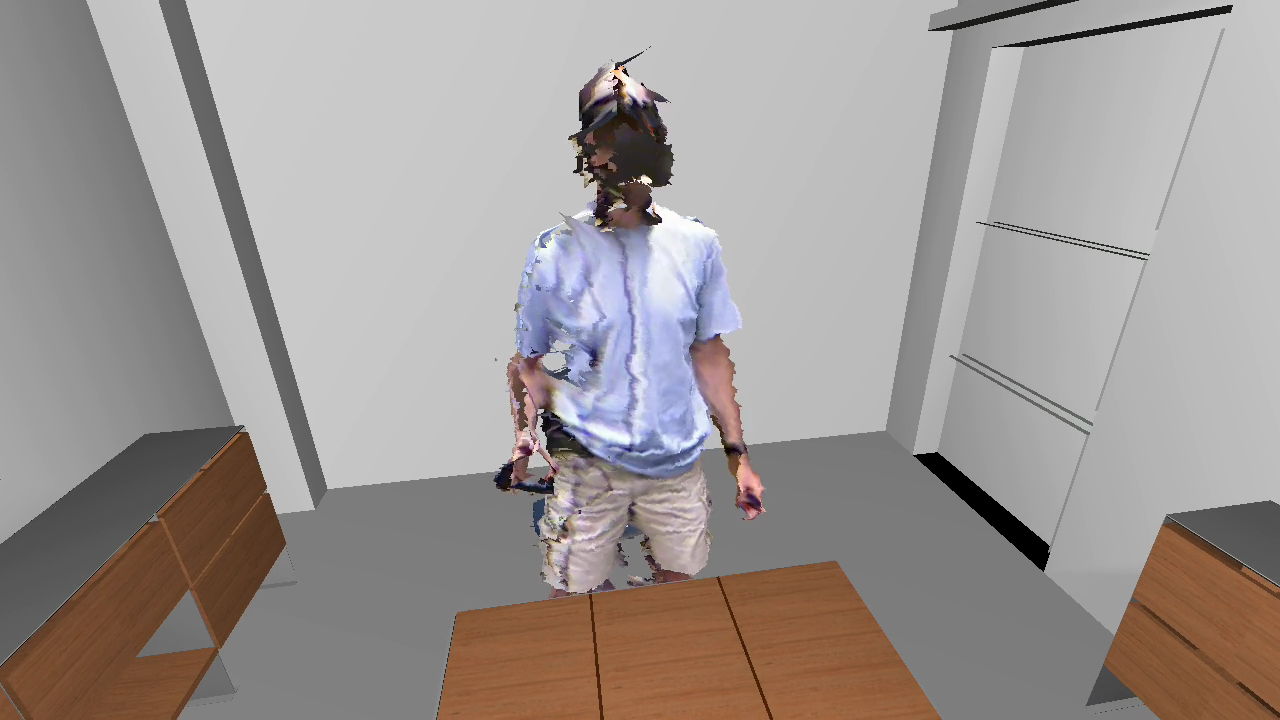I just got back from the Silicon Valley Virtual Reality Conference & Expo in the awesome Computer History Museum in Mountain View, just across the street from Google HQ. There were talks, there were round tables, there were panels (I was on a panel on non-game applications enabled by consumer VR, livestream archive here), but most importantly, there was an expo for consumer VR hardware and software. Without further ado, here are my early reports on what I saw and/or tried.
Monthly Archives: May 2014
Here we go again with Apple’s holography patent
I just found an article about my 3D Video Capture with Three Kinects video on Discovery News (which is great!), but then I found Figure 1 in the “Related Gallery.” Oh, and they also had a link to another article titled “Virtual Reality Sex Game Set To Stimulate” right in the middle of my article, but you learn to take that kind of thing in stride.

Figure 1: Image in the “related gallery” on Discovery News. Original caption: “Apple has filed a patent for a holographic phone, a concept that sounds absolutely cool. We can’t wait. But what would it look like? A video created by animator Mike Ko, who has made animations for Google, Nike, Toyota, and NASCAR, gives us an idea. Check it out here”
Nope. Nope nope nope no. Where do I start? No, Apple has not filed a patent for a holographic phone. And even if Apple had, this is not what it would look like. I don’t want to rag on Mike Ko, the animator who created the concept video (watch it here, it’s beautiful). It’s just that this is not how holograms work. See Figure 2 for a very crude Photoshop (well, Gimp) job on what this would look like if such holographic screens really existed, and Figure 4 for an even cruder job of what the thing Apple actually patented would look like, if they were audacious enough to put it into an iPhone. Continue reading
I think this is what statisticians call an “outlier”
Aside
My web server was close to having a nervous breakdown today, but it held up! Behold:
I’m expecting tomorrow will be back to normal. BTW, my previous “Best ever” was around 4,500 views on the day I published my first impressions from the Oculus Rift dev kit, a little more than one year ago.
3D Video Capture with Three Kinects
I just moved all my Kinects back to my lab after my foray into experimental mixed-reality theater a week ago, and just rebuilt my 3D video capture space / tele-presence site consisting of an Oculus Rift head-mounted display and three Kinects. Now that I have a new extrinsic calibration procedure to align multiple Kinects to each other (more on that soon), and managed to finally get a really nice alignment, I figured it was time to record a short video showing what multi-camera 3D video looks like using current-generation technology (no, I don’t have any Kinects Mark II yet). See Figure 1 for a still from the video, and the whole thing after the jump.
Quikwriting with a Thumbstick
In my previous post about gaze-directed Quikwriting I mentioned that the method should be well-suited to be mapped to a thumbstick. And indeed it is:
Using Vrui, implementing this was a piece of cake. Instead of modifying the existing Quikwrite tool, I created a new transformation tool that converts a two-axis analog joystick, e.g., a thumbstick on a game controller, to a virtual 6-DOF input device moving inside a flat square. Then, when binding the unmodified Quikwrite tool to that virtual input device, exactly the expected happens: the directions of the thumbstick translate 1:1 to the character selection regions of the Quikwrite square. I’m expecting that this new transformation tool will come in handy for other applications in the future, so that’s another benefit.
Gaze-directed Text Entry in VR Using Quikwrite
Text entry in virtual environments is one of those old problems that never seem to get solved. The core issue, of course, is that users in VR either don’t have keyboards (because they are in a CAVE, say), or can’t effectively use the keyboard they do have (because they are wearing an HMD that obstructs their vision). To the latter point: I consider myself a decent touch typist (my main keyboard doesn’t even have key labels), but the moment I put on an HMD, that goes out the window. There’s an interesting research question right there — do typists need to see their keyboards in their peripheral vision to use them, even when they never look at them directly? — but that’s a topic for another post.
Until speech recognition becomes powerful and reliable enough to use as an exclusive method (and even then, imagining having to dictate “for(int i=0;i<numEntries&&entries[i].key!=searchKey;++i)” already gives me a headache), and until brain/computer interfaces are developed and we plug our computers directly into our heads, we’re stuck with other approaches.
Unsurprisingly, the go-to method for developers who don’t want to write a research paper on text entry, but just need text entry in their VR applications right now, and don’t have good middleware to back them up, is a virtual 3D QWERTY keyboard controlled by a 2D or 3D input device (see Figure 1). It’s familiar, straightforward to implement, and it can even be used to enter text.





